- ブティック
- 「お問い合わせ」フォーム
-
高コントラストを有効にするアニメーションを無効にする
-
-
My Wishlist
0
マイウィッシュリストマイウィッシュリスト
-
マイバスケット
12月21日までに当サイトでご注文いただくと、ホリデーシーズン前に確実にお届けします。

ショパールは、単なるラグジュアリージュエリー&ウォッチ マニュファクチュールにとどまりません。技能育成は、世代から世代へ受け継がれてきたショパールの企業理念を形成する柱の一つであり、ショイフレ・ファミリーの重要な経営方針です。ショパール マニュファクチュールの最も貴重な財産の一つが、「その手で芸術を生み出す職人たち」であるという確固たる信念を持つメゾンは、フルリエとジュネーブに独自の職人のための見習い工房を設置し、未来の“巨匠”を養成しています。見習い職人たちは、フルリエで時計製造やマイクロメカニズムについて学び、ジュネーブで時計職人、ジュエラー、マイクロ機械工、時計外装の仕上げ職人として研修を受けます。
[A sustained note on string instruments]
(On-screen text: Chopard presents)
(Hands carefully unfold a white cloth, revealing a precious piece of jewellery within. Benjamin, in his workshop, wears a white lab coat and sketches with a mechanical pencil. He turns a black stone over in his hands.)
When I was 8, the first year we moved to Europe, a friend of my parents gave me a book on gemology. I think I took it with me everywhere from the ages of 8 to 14.
[Soft piano music plays]
(On-screen text: Chopard presents)
(Hands carefully unfold a white cloth, revealing a precious piece of jewellery within. Benjamin, in his workshop, wears a white lab coat and sketches with a mechanical pencil. He turns a black stone over in his hands.)
[Soft piano music plays]
(On-screen text: The word ART becomes ARTISAN.)
(On-screen text: From expertise to emotion. Chopard)
(A black and white graphite sketch of the palm of a hand, surrounded by the words EXPERTISE, CREATIVITY, EMOTION.)
Hands are very interesting because by looking at something you managed to gain a better... idea of its form, but actually by touching it you can be much more precise.
(A portrait of Benjamin.)
(On-screen text: Benjamin, Apprentice Jeweler)
So sometimes, when I need to check something, I close my eyes.
(On-screen text: Design)
Jewelry is something that dates back to before the first traces of writing. I really like that I am helping to continue it.
(Benjamin sketches in his workshop.)
I started out making jewelry from copper wire so I could try to learn.
(On-screen text: Preparing the materials)
I wanted to start using a blowtorch so I could weld.
(Benjamin lights a blowtorch, plunges a piece into its flame then into water to cool it.)
I enjoyed it so much that I took the pieces I made and used them as my portfolio and I applied to various different houses for an apprenticeship in jewelry-making.
(Benjamin uses various tools to expertly shape metal.)
In my first year, I made two Greek-inspired pieces. Then, in my second and third years, I made some slightly more Egyptian pieces. I then started to make pieces in a more Renaissance style. There are several competitions in the 4th year of the apprenticeship and one of them is the design competition. We're all given an envelope with a theme, as well as stones to use in the piece.
(On-screen text: Maquette)
The theme was the relationship between the passage of time, nature and human beings. I did a slightly modernized version of the great chain of being by making 12 items and each item used a different material to represent a different link in the chain of being. I took prehistoric materials for the bottom of the chain and then I followed the order of evolution until I reached human beings.
(Benjamin compares a prototype with the molded version.)
We are lucky as Chopard apprentices because we have a supervisor who is deeply interested in the history of art and of the profession in general. We gain knowledge that is increasingly rare and increasingly important.
(Benjamin arranges inserts made of different materials into the piece of jewelry.)
There is a great deal of historic heritage in artisanal trades that dates back centuries or millennia. So we feel very connected to ancient history.
(On-screen text: Presenting the piece)
We actually feel connected to the history of the profession as a whole and we know it is also our role to pass it on to future generations.
(On-screen text: Sharing the knowledge)
(Benjamin holds up the finished piece.)
(On-screen text: Chopard - The artisan of emotions - Since 1860)
見習い(トレーニング)制度は、古来から継承されてきたウォッチメイキングとジュエリーの技を確実に受け継ぐための唯一の方法であり、美を追究する職人たちの未来のために欠かすことができない伝統です。
カール-フリードリッヒ・ショイフレ
ショパールでトレーニングを受けた未来のジュエラーたちの中には、研修後にメゾンで働く者もいます。ベンジャミンもその一人です。彼は大学で美術史を学ぶ予定でしたが、クリエイティブなプロジェクトに携わるために1年間休学し、2016年1月にショパールで1週間のインターンシップに参加しました。ラグジュアリージュエリー製作の見習いを経て、彼はその後メゾンに就職し、ショパールのクリエイティブ部門で職人としての仕事を得ます。ベンジャミンはトレーニング期間中に、原材料の加工から始めてあらゆる手作業による職人技について学びました。研修生は通常、ニッケルシルバー、ブラス、シルバー、ゴールドの加工を習得しますが、彼はメゾンの見習い研修について次のように熱く語っています。
「ショパールで受けるトレーニングは、通常の修得要件の内容をはるかに超えており、今ではもう使われていないような歴史的な技術の指導にも取り組んでいます。私の場合、幸運にも、『人材育成に関する連邦規則(Federal Apprenticeship Ordinance)』に従って、現代のジュエリー製造技術だけでなく、多くの歴史的技術をトレーナーから教えてもらうことができ、様々な原材料を扱うことができました」。こうしたトレーニングへの取り組みが評価され、2008年、ショパールは、ジュネーブ州の応用美術部門において、「ベストトレーニングカンパニー賞(Best Training Company Prize)」を受賞しています。
専門知識からエモーションまで


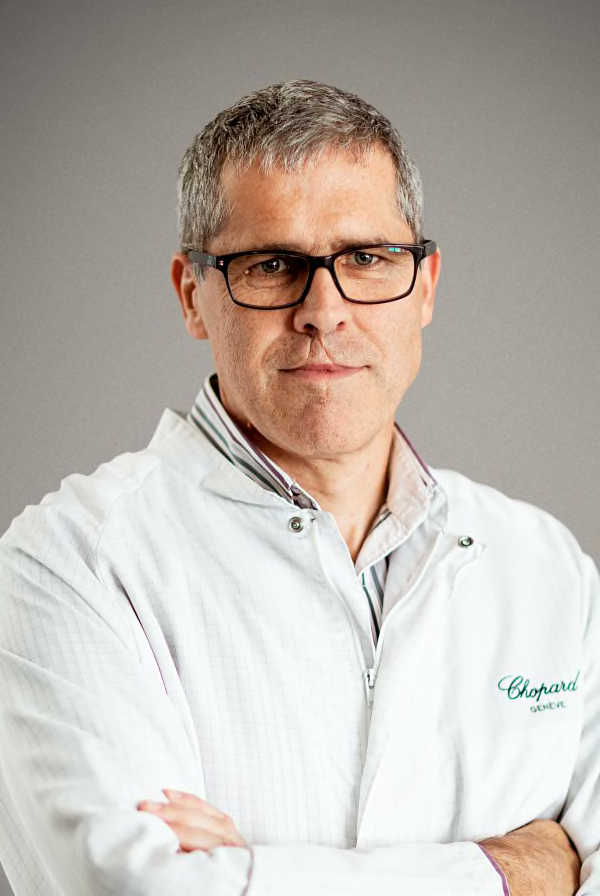
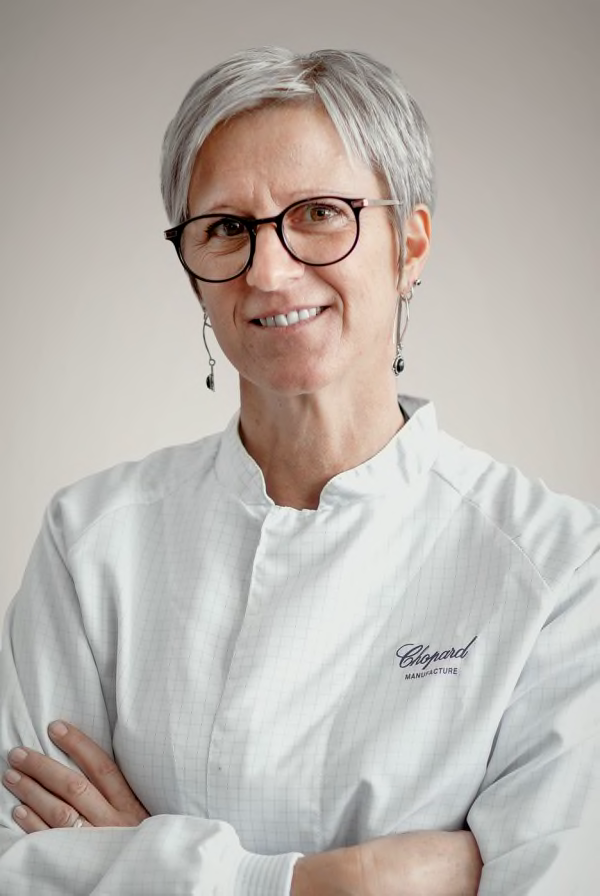


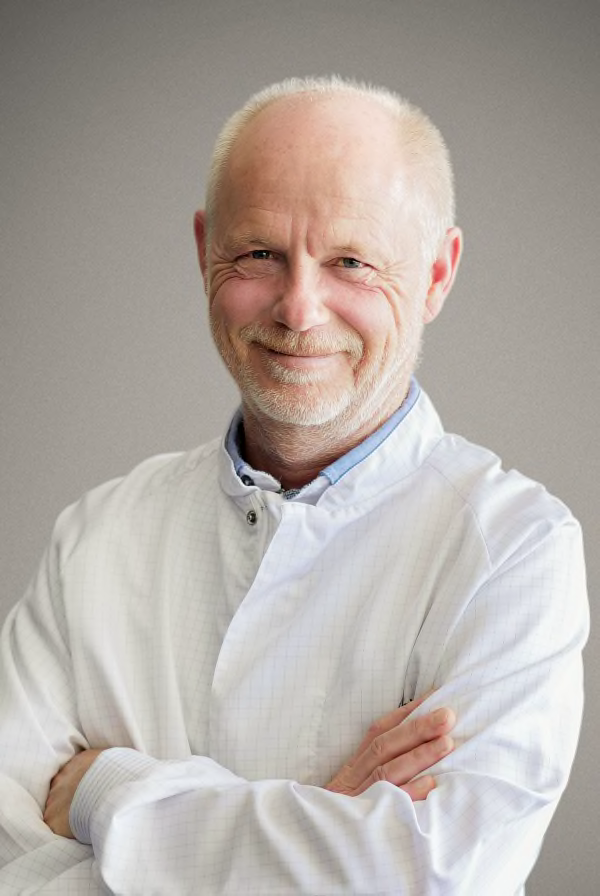

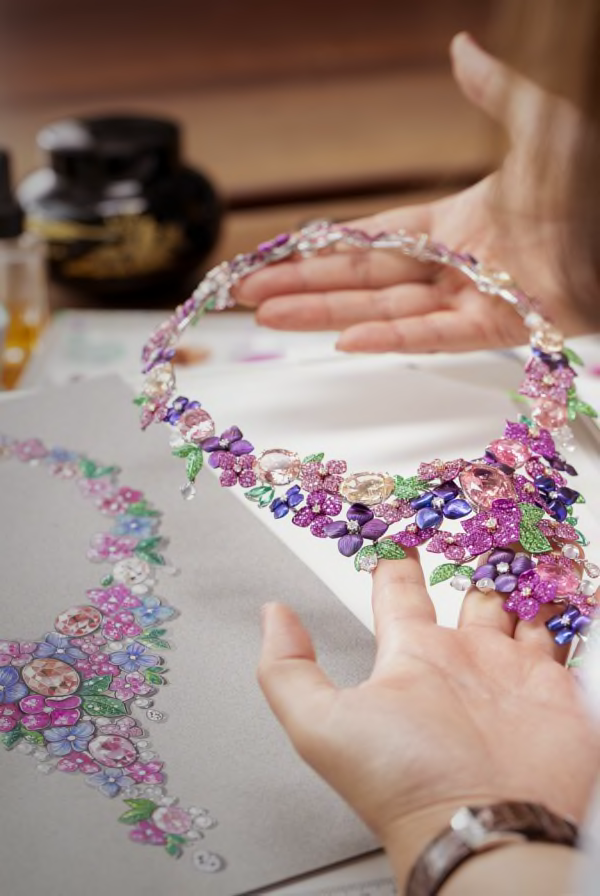


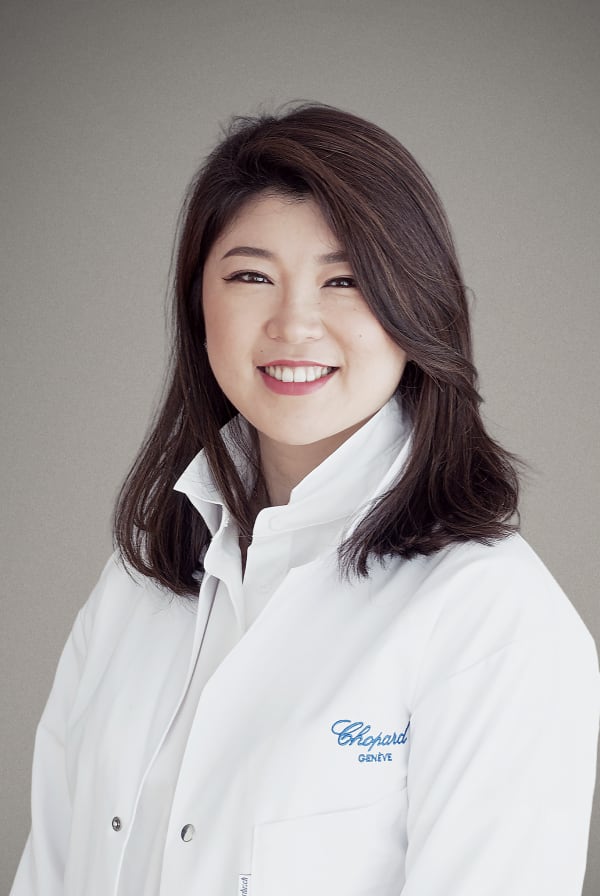



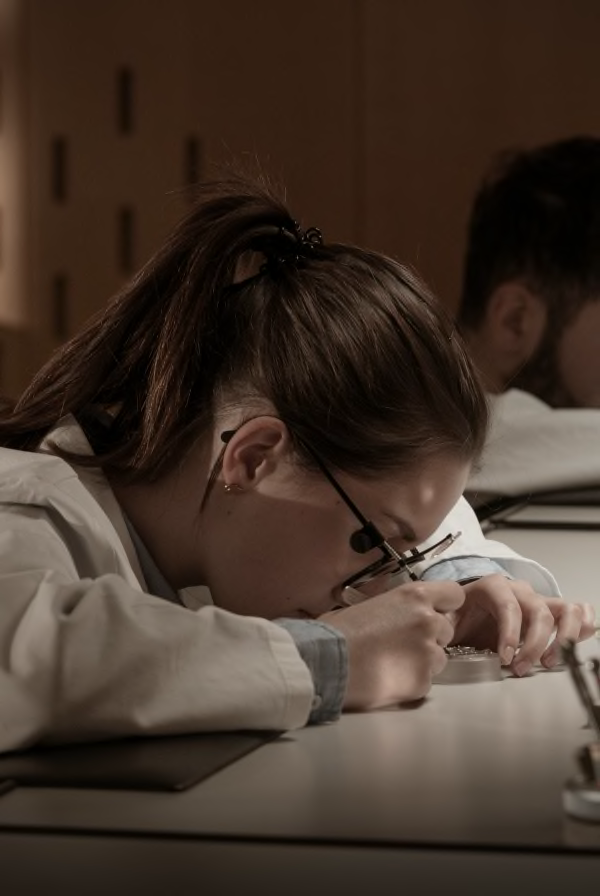


この製品に関する情報は追ってご連絡いたします。
ご希望のモデルが再入荷した際に通知メールを受け取るには、ご登録ください(ご登録から3か月が経過すると、お客様のリクエストと個人情報は削除されます)。
お客様のアカウントの Eメールアドレスを入力してください。パスワードをリセットするための Eメールをお送りします。
Suggested Products